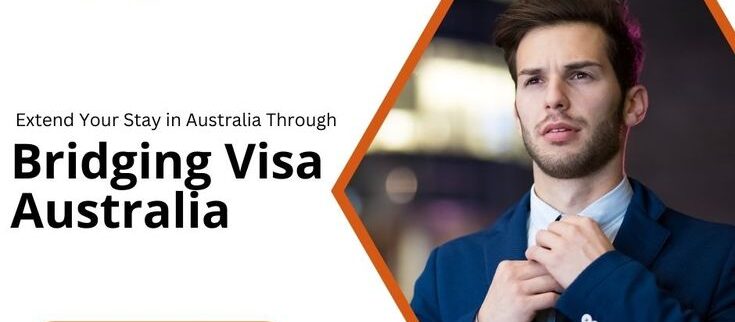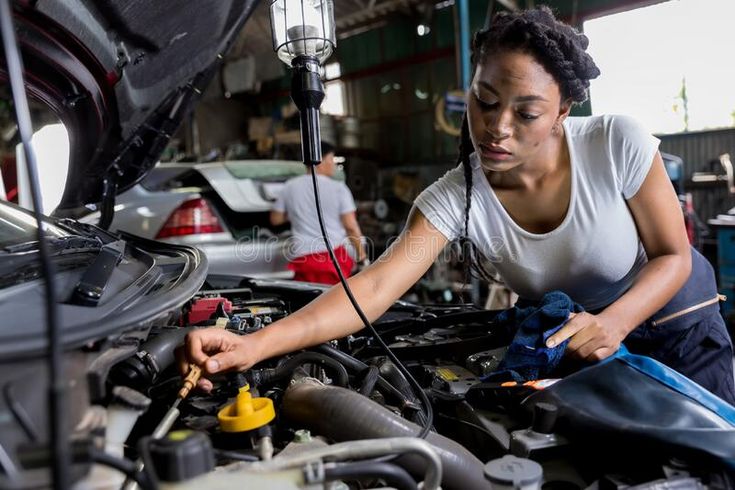Applying for a Bridging Visa in Australia: What You Need to Know
Australia’s immigration system can be complex, especially for those transitioning between visas. One crucial component of the immigration process is the Bridging Visa, which allows individuals to legally remain in Australia while their new visa application is being processed. Whether you’re a student, worker, or tourist awaiting a new visa decision, understanding how bridging visas work is vital.
What Is a Bridging Visa in Australia?
A Bridging Visa is a temporary visa that lets you stay in Australia while your substantive visa application is processed or while you make arrangements to leave the country. There are several types of Bridging Visas (A, B, C, D, E), each serving different purposes depending on your visa history and situation.
Results
#1. What is your gender?
#2. What is your highest level of education?
#3. Do you have a CV or resume ready?
#4. How much would you like to earn per hour?
#5. Are you ready to start working immediately?
#6. What type of job are you looking for?
#7. Have you ever attended a job interview before?
For example, Bridging Visa A (BVA) is granted when you apply for a new visa while holding a valid substantive visa. Meanwhile, Bridging Visa B (BVB) allows travel outside Australia and return during the processing period—ideal for those needing flexibility due to work or family.
This concept of bridging during transitions closely mirrors how job applicants pursue roles while awaiting permanent status, such as Mechanic Jobs in Australia with Sponsorship for Foreign Workers, where foreign tradespeople can apply for jobs while transitioning visa types.
Who Needs a Bridging Visa?
Anyone staying in Australia between the expiry of one visa and the approval of another will likely need a bridging visa. Common applicants include:
- Temporary residents applying for permanent residency
- International students switching to work visas
- Workers applying for skilled migration pathways
For instance, similar transitional phases exist for foreign jobseekers seeking Farm Worker Jobs in New Zealand for Foreigners with Sponsorship—they often apply while on temporary permits.
Types of Bridging Visas in Australia
Each Bridging Visa serves a distinct purpose. Here’s a quick breakdown:
| Bridging Visa Type | Purpose |
|---|---|
| Bridging Visa A (BVA) | For lawful visa holders applying for a new visa |
| Bridging Visa B (BVB) | Allows overseas travel and return while awaiting visa decision |
| Bridging Visa C (BVC) | For applicants who do not hold a substantive visa |
| Bridging Visa D (BVD) | For people unable to apply for a visa right away |
| Bridging Visa E (BVE) | Allows unlawful non-citizens to stay lawfully while arranging to depart or finalize immigration status |
Applying for the correct type is essential. For travelers or students unsure of their next step, consulting immigration support can prevent becoming unlawful residents.
Eligibility Requirements for Bridging Visas
To qualify for a bridging visa, you must:
- Be in Australia at the time of application
- Have a pending substantive visa application (except in some BVE cases)
- Meet character requirements
- Maintain lawful status, or take immediate steps to restore it
Meeting eligibility is not just about timing but also compliance. Just as Caregiver Jobs in the UK for Foreign Workers with Sponsorship require careful checks and legal status before acceptance, so does the bridging visa process.
How to Apply for a Bridging Visa
Applying for a Bridging Visa is often straightforward if done correctly. Most applications are submitted online through the Department of Home Affairs website as part of the substantive visa application.
Steps to Apply:
- Visit the Home Affairs ImmiAccount
- Log in or register
- Select the visa you’re applying for
- Answer all eligibility questions
- Upload required documents (passport, existing visa, etc.)
- Pay applicable fees if required
- Submit application
Once submitted, a Bridging Visa (usually A or C) is granted automatically or shortly after, depending on the conditions. While waiting, many foreign nationals explore employment opportunities, such as those listed in Factory Production Jobs in Australia for New Immigrants (Visa Help) to maintain financial stability.
Bridging Visa Work Rights
Work rights under a Bridging Visa depend on your previous visa conditions or the visa you’re applying for. Bridging Visa A often carries the same work rights as your last visa, while BVC and BVE may come with “No Work” restrictions initially.
How to Gain Work Rights
If your Bridging Visa doesn’t allow you to work, you can request a change by:
- Demonstrating financial hardship
- Submitting evidence such as bank statements or rejection letters
Foreigners using this waiting period wisely often explore transitional job markets, such as Construction Labourer Jobs in Australia with Visa Sponsorship to gain income and experience.
When Do Bridging Visas Become Active?
A Bridging Visa only becomes active when your current visa expires. For example, if you’re on a student visa set to expire on June 30 and you’ve already applied for a work visa, your BVA will start from July 1.
This automatic activation makes it easy to remain in Australia legally, reducing uncertainty—something that job seekers in programs like Finding Entry-Level Jobs in Canada with Sponsorship 2025 can appreciate as they await longer-term outcomes.
Travel Conditions on a Bridging Visa
Not all Bridging Visas allow international travel. Only Bridging Visa B (BVB) comes with travel rights. If you’re on a BVA or BVC, traveling outside Australia may result in losing the visa. To travel and return legally, you must apply for a BVB before departure.
Common Scenarios Where a Bridging Visa Applies
Bridging Visas are designed to cover a variety of real‑life circumstances in which an individual’s current visa status changes or lapses. Below are expanded examples illustrating when and how different Bridging Visas come into play, along with practical tips to navigate each situation.
1. Student to Graduate Transition (Bridging Visa A)
Scenario:
Maria is on a Student Visa (subclass 500) completing her final semester at an Australian university. She wants to stay on after graduation to gain work experience and decides to apply for a Temporary Graduate Visa (subclass 485) before her current visa expires.
Outcome:
-
Upon lodging her subclass 485 application online, she is automatically granted a Bridging Visa A (BVA).
-
The BVA takes effect the day her student visa expires, allowing her to remain lawfully in Australia while her graduate visa application is processed.
-
Importantly, her BVA inherits the work rights of her student visa, so she can continue her part‑time work in hospitality without interruption.
Key Tip:
Always apply for the graduate visa at least six weeks before your student visa expiry. This buffer ensures your BVA activates seamlessly and you maintain continuous lawful status.
2. Late Skilled Visa Application (Bridging Visa C)
Scenario:
Jin is employed under a Temporary Skill Shortage Visa (subclass 482) that expires on June 30. He plans to apply for an Employer‑Sponsored Skilled Visa (subclass 186) but only submits his application after June 30 due to finalizing employer sponsorship paperwork.
Outcome:
-
Because his substantive visa had already expired at the time of application, he cannot receive a BVA. Instead, he is granted a Bridging Visa C (BVC).
-
The BVC allows him to stay lawfully but comes with “No Work” conditions initially.
-
To regain work rights, Jin lodges a separate request demonstrating financial hardship, attaching bank statements and an employment contract.
Key Tip:
If you anticipate any delay in submitting your skilled visa application, start preparing the sponsorship documentation early and discuss possible late‑lodgment scenarios with your employer.
3. Regularizing Unlawful Status (Bridging Visa E)
Scenario:
Alex overstays his visitor visa (subclass 600) due to family emergencies and becomes an unlawful non‑citizen. He now wants to apply for a Protection Visa (subclass 866) to remain in Australia on humanitarian grounds.
Outcome:
-
Upon lodging the Protection Visa application, he is granted a Bridging Visa E (BVE).
-
The BVE allows Alex to stay lawfully while his protection claim is assessed, though it may not initially include work rights.
-
He can later request work rights if he demonstrates that he cannot support himself without employment.
Key Tip:
If you’ve already become unlawful, apply for a BVE as soon as possible to minimize risks of detention or removal. Seek legal advice to strengthen your protection application.
4. Special Return Travel Needs (Bridging Visa B)
Scenario:
Priya holds a BVA after applying for a Partner Visa (subclass 820) but needs to travel overseas to attend a family wedding. Without a specific travel visa, she risks losing her bridging status.
Outcome:
-
Priya applies for a Bridging Visa B (BVB), specifying her intended travel dates.
-
The BVB grants her permission to depart and return within that window without invalidating her pending Partner Visa application.
-
She travels confidently, knowing her visa status remains intact upon re‑entry.
Key Tip:
Submit your BVB application at least 3 weeks before departure, and clearly outline your travel period to avoid any gaps in lawful status.
5. Transitioning Between Different Visa Streams
Scenario:
Sam’s working holiday visa (subclass 417) is due to expire, but he has been offered a position that qualifies for the Skilled Independent Visa (subclass 189). He lodges the subclass 189 application online one month before his 417 expires.
Outcome:
-
Sam receives a BVA that comes with full work rights identical to his working holiday visa.
-
While waiting, he starts his new job under his employer’s sponsorship, gaining relevant experience that strengthens his skilled migration application.
Key Tip:
When moving between entirely different visa streams, confirm with the Department of Home Affairs which work rights transfer to your BVA to avoid surprises.
Job Opportunities While on a Bridging Visa (With Salaries)
While on a Bridging Visa, many immigrants explore available jobs that may also lead to sponsorship opportunities. Below is a table of Australia-based visa sponsorship jobs and their salary ranges:
Australia Jobs with Visa Sponsorship (AUD)
| Job Title | Estimated Salary (AUD) |
|---|---|
| Mechanic Jobs in Australia with Sponsorship for Foreign Workers | $60,000 – $75,000 |
| Factory Production Jobs in Australia for New Immigrants (Visa Help) | $45,000 – $55,000 |
| Construction Labourer Jobs in Australia with Visa Sponsorship | $50,000 – $65,000 |
| Long-Term Budget Accommodation in Australia for Immigrants | (Not applicable – support service) |
Finding work early helps avoid financial stress and enhances your stay experience—whether you’re a student or skilled laborer.
Accommodations and Living Costs While on a Bridging Visa
Securing affordable housing is crucial during visa transitions. Australia offers various low-cost options such as shared rooms, student hostels, and long-term rentals.
Many new arrivals use platforms to discover Long-Term Budget Accommodation in Australia for Immigrants, especially in urban hubs like Sydney and Melbourne. Having stable accommodation strengthens your bridging visa application, showing you’re financially stable and settled.
This parallels the strategies employed by newcomers in other nations such as Affordable Room Rentals in Canada for Newcomers where housing plays a pivotal role in immigration stability.
Comparing Bridging Visas with Other International Transition Systems
Understanding Australia’s Bridging Visa system becomes easier when compared with similar global visa pathways:
| Country | Transition Program | Purpose |
|---|---|---|
| Australia | Bridging Visa | Temporary legal stay during visa processing |
| Ireland | Ireland Critical Skills Employment Permit Guide | For high-demand skills and visa upgrades |
| Netherlands | Netherlands Highly Skilled Migrant Visa Program Explained | For advanced professionals and knowledge workers |
| USA | Software Engineer Jobs in the USA with H1B Sponsorship 2025 | Specialty employment-based transition |
These systems help professionals bridge from temporary to permanent residency or employment statuses, offering models for policy development.
Potential Pitfalls and How to Avoid Them
Navigating the Bridging Visa process can be smooth if you’re well prepared, but there are several common missteps that applicants often make. Below, we’ll unpack each pitfall in detail and provide concrete strategies to steer clear of them.
1. Letting Your Current Visa Expire Before Applying
The Pitfall:
Many applicants assume they can wait until the last minute to lodge their new visa application. Unfortunately, if your substantive visa expires before you apply, you may become an unlawful non‑citizen, which can lead to detention or removal proceedings.
How to Avoid It:
- Set Early Reminders: Aim to submit your new visa application at least 4–6 weeks before your current visa’s expiry date.
- Use Calendar Alerts: Mark the expiry date in your phone or email calendar with a reminder one month prior.
- Consult an Agent Early: If you’re uncertain about which visa to apply for, talk to a registered migration agent as soon as you receive notice that your current visa is nearing expiry.
2. Failing to Request Work Rights When Required
The Pitfall:
Not all Bridging Visas automatically grant work rights. Applicants who assume they can continue working and then find themselves without authorization risk breaching visa conditions—and potentially facing fines or visa cancellation.
How to Avoid It:
- Check Your Bridging Visa Conditions: As soon as you receive your Bridging Visa grant notice, review the “Work Rights” section.
- Submit a Work Rights Request Promptly: If your visa states “No Work,” lodge a separate request for work rights with supporting evidence of financial hardship (bank statements, bills, rent agreements).
- Document Everything: Keep copies of your request and any correspondence with the Department of Home Affairs.
Example: Seasonal workers in programs like Top Seasonal Jobs in Canada with Visa Sponsorship often face similar work‑rights gaps and mitigate them by applying early and providing clear evidence of need.
3. Leaving Australia Without a Bridging Visa B (BVB)
The Pitfall:
If you depart Australia while holding a Bridging Visa A or C, you lose your right to re‑enter on that visa. Without a Bridging Visa B (which specifically allows travel), your BVA/C becomes invalid, and you could be stranded overseas.
How to Avoid It:
- Plan Travel in Advance: If you anticipate travel, apply for a Bridging Visa B well before your departure date—ideally at least 2–3 weeks ahead.
- Understand Your Travel Window: BVB applications require you to specify the travel period; ensure it covers your entire trip.
- Keep Your Visa Grant Notice Handy: Carry an electronic or printed copy of your BVB grant when you travel, along with your substantive visa application details.
4. Providing Incorrect or Incomplete Documents
The Pitfall:
Submitting missing pages, illegible scans, or incorrect forms can delay your application by weeks or even lead to refusal. Small errors—like a wrong passport number or missing signature—are surprisingly common.
How to Avoid It:
- Use the Document Checklist: The Department of Home Affairs provides a checklist for each visa subclass. Tick off each item as you gather it.
- Quality Control: Scan documents at high resolution (300 dpi), ensure all text is legible, and include translations for any non‑English materials.
- Double‑Check Form Fields: Before submission, review each field for accuracy—names, dates of birth, passport numbers, and contact details must match exactly.
- Seek Professional Review: If in doubt, have a migration agent or immigration lawyer review your complete application packet.
Staying Informed and Proactive
Being aware of these pitfalls—and taking steps to avoid them—will significantly increase your chances of a smooth Bridging Visa experience. Early planning, meticulous documentation, and clear communication with immigration authorities are your best defenses.
By adopting these strategies, you’ll mirror the success of many temporary visa holders worldwide—whether they’re seasonal workers in Canada or skilled migrants in Australia—who navigate complex processes through preparation and attention to detail.
Summary: Key Points to Remember
- A Bridging Visa allows you to remain in Australia lawfully during visa transitions
- Choose the correct type (A, B, C, D, E) depending on your situation
- Apply early, especially before your current visa expires
- Understand work and travel rights to avoid breaches
- Seek support in housing and job markets to ease the transition
Final Thoughts
Bridging Visas are essential for anyone navigating Australia’s complex visa system. Whether you’re transitioning from a student to a work visa, managing legal status after an expired permit, or simply preparing for permanent residency, the Bridging Visa offers legal peace of mind.
It’s wise to take advantage of this time to settle into the country, find employment like Restaurant Staff Jobs in Canada (Cook, Waiter) with Sponsorship in similar international contexts, and prepare for long-term opportunities.









